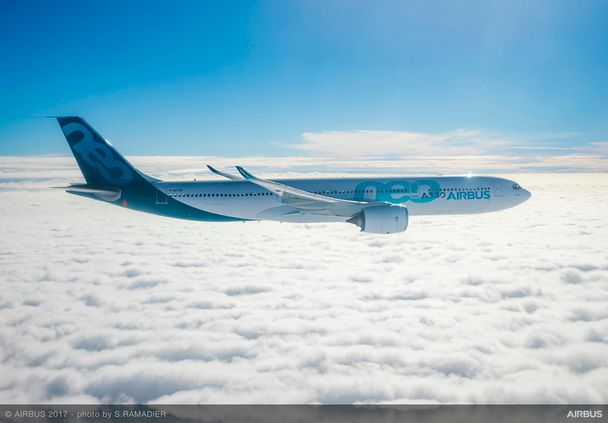EASA certifies A330neo to ICAO’s new CO2 emissions standard

Cleaner & more efficient: the A330neo first to receive green-light for post-2028 environmental regulations
The A330-900 (Neo) has become the first large airliner to be certified by *EASA for *ICAO’s new CO2 emissions standard. With this milestone, not only is Airbus the first manufacturer to receive such certification for any commercial aircraft world-wide, but this also demonstrates that the aircraft which Airbus produces today, and will continue to produce well into the future, will comply with foreseeable CO2 regulations.
The new requirement, adopted in 2017, has been developed by the UN’s ICAO Committee on Aviation Environmental Protection (CAEP) and is now being cascaded to certifying airworthiness authorities worldwide. Moreover, it complements existing aircraft noise and engine emissions standards and will be applicable both to New Type-Certified aircraft and to In-Production aircraft. By January 2028 all aircraft being produced will need to comply with the ICAO CO2 standard. Existing in-service aircraft, meanwhile, are being covered by separate environmental measures.
Simone Rauer, Airbus’ Head of Aviation Environmental Roadmap commented: “Airbus is proud to be the first commercial aircraft manufacturer to receive EASA certification for ICAO’s new CO2 emissions requirement. ICAO standards are important elements of the global ICAO action plan to regulate emissions from aircraft and engines and to help ensure a level playing-field in the industry.” She adds: “For the A330neo in particular this award demonstrates that this aircraft meets ICAO’s environmental regulations beyond 2028.”
As ICAO released its recommendation to Member States, EASA was the first major certifying authority to implement the CO2 standard in its certification requirements for commercial aircraft. Going forward, Airbus will learn from being the first manufacturer to apply this certification requirement and will contribute to improving and further developing the standards set by ICAO, and benefiting the entire industry. All the other Airbus airliner products will receive certification in due course in a timeframe consistent with the certification requirements, and will thus comply with the CO2 requirements by the January 2028 deadline.
‘Technologically-encouraging’ and complementary to other ICAO and EASA environmental measures for aviation
Furthermore, ICAO standards such as this one are ‘technology-encouraging’ and are based on demonstrated and proven technologies which can be inserted into the next generation of aircraft. Moreover, this particular one is an important new ‘brick’ to complement a range of existing ICAO measures which help to control and curb the emissions which are attributed to civil aviation. Such other measures also include sustainable aviation fuels as well as market-based incentives including ICAO’s *CORSIA -- Annex 16 Volume 4 carbon offsetting mechanisms for operational CO2 emissions etc.
It should be noted that only 12% of the world fleets today comprise the latest generation of aircraft, so there is still a great deal of CO2 emissions reductions which can be achieved simply via large scale fleet renewals with new-generation aircraft like the A220, A320neo, A321neo, A330neo and A350 families.
The CO2 certification of the current product lines (such as the Airbus aircraft types listed above, plus the latest aircraft from other OEMs) is foreseen to be one of the key pillars of the forthcoming EASA Environmental Label (encompassing in addition to CO2, noise and local emissions certification standards) in order to convey the environmental product performance of new-generation aircraft.
*Abbreviations:
EASA = European Union Aviation Safety Agency
ICAO = International Civil Aviation Organization
CORSIA = Carbon Offsetting and Reduction Scheme for International Aviation
Background information:
The standard defines the certification of a CO2 emissions Metric Value which needs to remain below a limit line function of the aircraft Maximum Take-Off Weight (pass/fail criterion). This Metric Value comprises two main components: a fuel burn component (called Specific Air Range or SAR) measured at three different masses during the cruise and then averaged; and a non-dimensional component (called Reference Geometric Factor or RGF) representing the cabin ‘useful’ surface from the cockpit door to the aft end of the pressurised area. The resulting CO2 emissions Metric Value, expressed as kilogrammes of fuel per kilometre.
The following applicability dates have been defined:
- 1st of January 2020: New Types (for applications made to EASA after this date);
- 1st of January 2023: Derivative aircraft under certain conditions (for applications made to EASA after this date);
- 1st of January 2028: All In-Production aircraft.
Note: It will not be possible to deliver an aircraft after this date if the model is not certified to the CO2 Emissions standard.